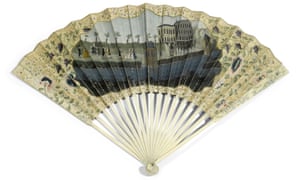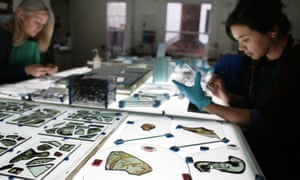via The National Archives Blog by Benjamin Trowbridge
For Lionel his sonne with theim to send
The duke his doughter of Melayn for to wed
Promysing then hym so to recommend
That of Itale the rule sholde all be led
By hym and his frendes of Italye bred

19th century drawing of the bronze effigy of
Lionel of Antwerp, Duke of Clarence on the
Lionel of Antwerp, Duke of Clarence on the
tomb of his father Edward III, Westminster Abbey
(source: Wikicommons)
Rewriting Russian history
via Eurozine by Dagmara Moskwa

In 2015 the 70th anniversary of the Soviet victory over Nazi Germany was celebrated in grand style. During that time, a larger than usual number of Stalin monuments was erected in several cities especially in south-western parts of the country upon the proposal of the communist party. The communists’ call came after a 2014 law passed by the Duma introduced a criminal penalty for rehabilitating Nazism and criticising Soviet activities during the Second World War. The law stipulates up to five years in prison for ‘lying about history’. Similar steps have been taken with regards to teaching history in schools.
Continue reading
==============================
Is Sugar Good For Concentration?
via Big Think by Teodora Zareva

Should you or shouldn’t you bring that chocolate bar to your next exam? Scientific studies have been inconclusive when it comes to the cognitive effects of sugar. Some suggest that sugar has positive effects on brain function while others disagree. Very few, however, have compared the effects of different types of sugar.
A new study from New Zealand published in the journal Physiology and Behaviour set out to do just that. It tested the cognitive effects of different sugars – glucose, fructose and sucrose – to see if they affected information processing, executive functioning and attention differently.
Sucrose, or table sugar, is broken down in the body to glucose and fructose which are metabolized quite differently. Fructose is metabolized much more slowly and is almost entirely absorbed by the liver, while glucose is metabolized widely in the body and distributed (with the help of insulin) to the muscles, kidneys, adipose tissue and brain. Notably, the brain can only use two substrates for energy – glucose and ketones (which is why ketogenic diets are touted for their cognitive benefits).
Continue reading
==============================
What the Stoics did for us
via 3 Quarks Daily: Massimo Pigliucci in New Humanist
Let me then introduce you to three fundamental ideas of Stoicism – one theoretical, the other two practical – to explain why I’ve become what I call a secular Stoic. To begin with, the Stoics – a school of philosophers who flourished in the Greek and Roman worlds for several hundred years from the third century BCE – thought that, in order to figure out how to live our lives (what they called ethics), we need to study two other topics: physics and logic. “Physics” meant an understanding of the world, as best as human beings can grasp it, which is done by way of all the natural sciences as well as by metaphysics. The reason that physics is considered so important is that attempting to live while adopting grossly incorrect notions about how the world works is a recipe for disaster. “Logic” meant not only formal reasoning, but also what we would today call cognitive science: if we don’t know how to use our mind correctly, including an awareness of its pitfalls, then we are not going to be in a position to live a good life.
Continue reading
==============================
Rare fan painting of Bath gives glimpse of life in Georgian England
via the Guardian by Maev Kennedy

A hand-painted fan showing a long-lost view of a Bath landmark that Jane Austen would have known has been acquired by the city’s Holburne Museum, where it will go on display for the first time.
The rare fan, which had been in a private collection, shows elegantly dressed people strolling in Harrison’s Walk, a tree-lined riverside walk kept exclusive by paid subscription. The building in the background contained Bath’s first assembly rooms, known as Harrison’s Rooms, built for an entrepreneur in 1708 at the urging of Beau Nash, who became the arbiter of good taste and genteel behaviour as Bath became the most fashionable spa in Georgian England.
Continue reading
==============================
Westminster Abbey's attics yield a treasure trove of stained glass
via the Guardian by Maev Kennedy

When the archaeologist Warwick Rodwell scooped up a handful of dust from the attics of Westminster Abbey and saw dozens of tiny fragments of glass glittering in the grime, he realised they were dealing with excavation, not house clearance.
The salvaged glass – some dating back to the 13th century, including stars, flowers and sun rays, fierce little mythical animals and beautiful medieval faces – is being recycled into dazzling new windows being made for the abbey at the stained glass studio at Canterbury Cathedral, where some of the original medieval glass artists may have worked.
Continue reading
==============================
A Short Analysis of Shakespeare’s Sonnet 129: ‘The expense of spirit in a waste of shame’
via Interesting Literature
When we reach no. 129 in Shakespeare’s Sonnets (‘The expense of spirit in a waste of shame’), we come across a rarity: two classic sonnets one after the other (we’ll come to Sonnet 130 next week). This first one is famous for its analysis of the psyche (particularly the male psyche) after sexual gratification has been achieved. What explains the feeling of sadness, and even self-loathing, which often ensues?
Continue reading
==============================
Natural-born existentialists
Ethics cannot be based on human nature because, as evolutionary biology tells us, there is no such thing
via Arts & Letters Daily: Ronnie de Sousa in AEON
Nature, Mr Allnut, is what we were put in the world to rise above.
Katherine Hepburn to Humphrey Bogart in African Queen (1951)
Questions about what matters, and why, and what exists in the world, are quintessentially philosophical. The answers to many of these questions are informed by how we conceive of ourselves. How has what is often described as the ‘Copernican revolution’ effected by Charles Darwin changed our self-conception? One particularly surprising feature of evolutionary biology is that it lends significant support to existentialism.To make the journey from evolutionary biology to existentialism, let’s start with one of the oldest and most profound of philosophical questions: how do we decide what is right or wrong, good or bad? Many philosophers have warned that no facts about nature can ever provide grounds for claims about values. In A Treatise of Human Nature (1739-40), David Hume made a compelling argument that an unbridgeable gap separates fact from value, ‘is’ from ‘ought’. To attempt to bridge that gap is to commit the ‘naturalistic fallacy’: no argument from factual premises can ever secure a conclusion about what is valuable, or about what to do.
Continue reading
==============================
A saving breath: The history of respiratory care
via Tara at ResearchBuzz Firehose: Erin BLakemore in the Washington Post
 American Association for Respiratory Care Virtual Museum
American Association for Respiratory Care Virtual MuseumStethoscopes. CPR. Oxygen tanks.
All make it possible for doctors to diagnose and treat conditions of the lungs, including tuberculosis and other diseases that claimed millions of lives before advances in respiratory medicine and therapy. There's a fascinating history here.
You can delve into that history — and learn more about the researchers and medical professionals who help people catch their breath today — at the American Association for Respiratory Care's online museum.
The website introduces topics you may not have known could be so interesting. Take the weird-looking inhalers that gave asthma patients relief during the early 20th century. Or the story of tuberculosis treatment, which once involved such things as TB colonies on boats that isolated patients and tent settlements where patients in search of relief lived outdoors even during harsh winters.
Continue reading
==============================
New Renaissance: how Florence is freeing its great female artists
via the Guardian by Joanna Moorhead

Ready in 2019 … a detail of Jesus and Saint John from Plautilla Nelli’s Last Supper. Photograph: Kirsten Hills
In a dark cluttered studio in central Florence, restorer Rossella Lari is working on a little-known jewel of the Renaissance. It’s vast: a seven metre by five metre depiction of the Last Supper, with figures that are almost lifesize, that was painted in the 1560s.
As she works, Lari says she thinks often of the person who painted it. “You get to know an artist when you restore their painting,” she says. “You learn about them from the way they use the paint, from their brushstrokes, from their attention to detail.” This artist, she says, was strong, confident and determined. She had to be, because she was also female, the earliest significant female Renaissance artist.
Her name was Plautilla Nelli (1524‑1588), and the painting Lari is working on is her masterpiece. When it’s finished, in 2019, it will go on show at the Santa Maria Novella Museum in Florence, the first time it will have been publicly exhibited in 450 years. “That is a very significant moment, not only for Nelli but for all the forgotten women artists of the Renaissance, as well as for artists today who don’t realise how rich a contribution women made to that era,” says Linda Falcone of Advancing Women Artists (AWA), an organisation championing forgotten works.
Continue reading
==============================
Curious Facts about the Golden Age of Detective Fiction
via Interesting Literature
In this week’s Dispatches from The Secret Library, Dr Oliver Tearle investigates the fascinating facts behind some of the greatest detective novels
The rise of detective fiction is a fascinating topic (previously, I’ve chosen 10 of the greatest examples of the genre), and it’s no surprise that a book telling the story of classic crime fiction in 100 books should yield many surprising and interesting facts. This is certainly the case with Martin Edwards’ The Story of Classic Crime in 100 Books (British Library Crime Classics), a beautifully produced book from the British Library which charts the rise of crime fiction during the genre’s ‘Golden Age’ of the first half of the twentieth century.
Continue reading
No comments:
Post a Comment